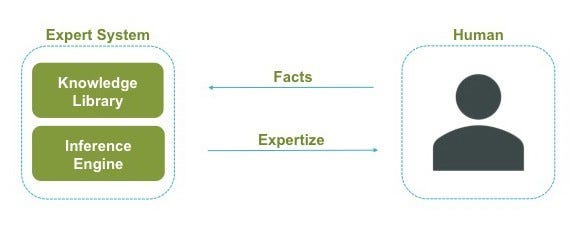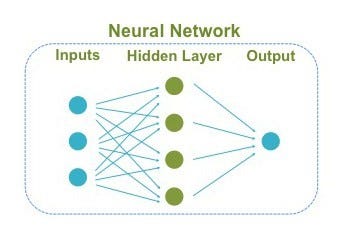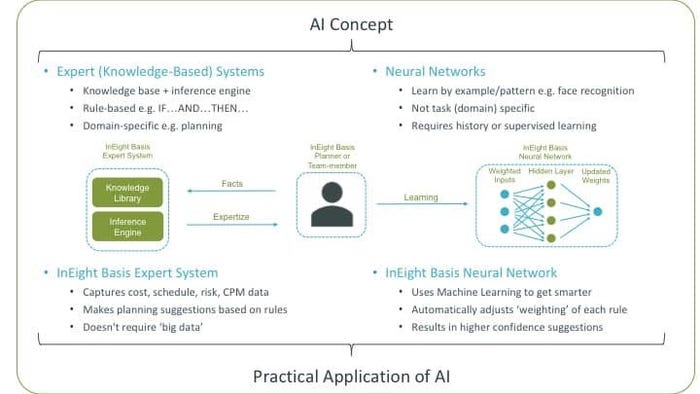How Artificial Intelligence will make project planning better
How Artificial Intelligence will make project planning better
November 22, 2019

by Dan Patterson, InEight 22 November 2019
There are many
definitions of artificial intelligence or AI. In fact, a Google search returns 2.1
billion results. One of the funniest definitions I have come across is “AI is
whatever hasn’t been done yet” – now there’s a vague and unhelpful answer!
One of the more useful definitions I have found is “AI is the ability of a computer program or a machine to think and learn. In general use, the term ‘artificial intelligence’ means a machine which mimics human cognition” (wikipedia, 2018). So, machines being able to think and learn seems to be the crux of AI.
Humans
make decisions based on thought and learning. We make sound or good decisions based on observational reasoning as
well as associative patterns. We also sometimes make bad decisions that
we can learn from to make us smarter the next time around. So,
our thought process gets smarter the more we learn.
If a
machine can acquire knowledge and understand or recognize it, then it too can
start to make informed (and hopefully good) decisions for me. I believe AI is
really about a machine being able to make an informed decision that is a sound
one. AI is a decision support system (DSS) that helps me make a better decision faster than I could
have otherwise made.
The problem with project planning today
One of the hardest
challenges in project management is accurately forecasting future outcomes
(project completion date, total cost) of very complicated and highly uncertain
endeavors (projects) – we call this planning.
As an industry, we have
developed some tried and trusted techniques such as critical path method (CPM)
to assist in modeling project outcomes. But these models are only as good as
the inputs we feed into them.
If CPM were a complete
solution, then we wouldn’t continue to experience project cost and schedule
overruns. The problem isn’t CPM though. The problem is our inability to
accurately model what we think will happen during project execution because:
There are a huge number of variables (tasks and sequence)
There are a huge number of uncertainties associated with those variables (duration or scope uncertainty)
Schedule risk analysis
tools help tell us how bad our forecast may be, but they do nothing in terms of
telling us what the inputs to our schedule should have been in the first place.
This is why I believe AI can massively help project planning. If
AI can assist the planner by making suggestions that are sound, then the
immense challenge we have described starts to become surmountable. Added to
that, if our planning tool can also start to make better suggestions by observational or
associative learning, then we are headed down a seriously valuable and exciting
path.
Which AI approach is best for helping with project planning?
The majority of today’s AI solutions are Artificial Narrow
Intelligence (ANI)-based. ANI, also referred to as Weak or
Applied AI, is a type of AI that specializes in one area. Examples of this would be the IBM Deep Blue
computer beating a chess master at a game of chess. The machine was programmed
to be very good at one thing – playing chess. You might be surprised to learn
that Apple’s Siri is also an example of ANI. She is programmed to respond to a
limited set of questions. If we go
beyond those questions, she cannot give an informed answer. Given the current
state of AI-related technologies, ANI-based technologies are the most likely to
support advancing the science of planning.
Today,
our implementation of ANI-based AI can be loosely classified into two
categories: expert systems and neural networks.
Expert (knowledge-based) Systems
An
expert system is comprised of a knowledge base and an inference engine. For a
project planning tool, the knowledge base would contain data pertaining to
activities and their durations for different types of project. The inference
engine is then responsible for trying to return a subset of this knowledge base
back to the planner based on the question they may ask, such as “What activities should I include for my engineering scope of my
hospital project?”

Neural Networks
A neural network (NN)
tries to simulate the way a brain processes, learns and remembers information.
Learning from experience it looks for similarities in information that it is
provided, as well as in previous data and then makes a decision based on that
process – it looks for patterns. This pattern matching is called machine
learning – you must teach a NN what is a match and what is not. Feed in enough
examples of characteristics of an alive human (breathing, pulse, eye movement)
and a neural network will start to establish a pattern as to whether those
inputs drive towards a correct diagnosis of “alive or dead?”

Unlike neural networks,
expert systems do not require up-front learning nor necessarily require large
amounts of data to be effective. Expert systems can and do absolutely learn and get smarter over time (by
adjusting or adding rules in the inference engine) but they have the benefit of
not needing to be “trained up front” to function correctly.
Neural
networks have been described as black boxes – you feed in inputs, they
establish algorithms based on learned patterns and then spit out an answer. Still,
planning can benefit from a neural network approach as a way to make the
tool smarter. As mentioned, expert systems can get smarter,
but they need to be trained. If we can track a planner’s reaction to
suggestions made by our expert system, then those reactions can be used to
potentially adjust the weights we give to the various attributes in our expert
system.
So
then relating back to our original definition of AI, for a project planning
tool, use an expert system to think and use a neural network
to learn. Combine these two and we have at our disposal, an
incredibly powerful planning aid.
AI and HI (Human
Intelligence)
By
focusing on a knowledge-driven planning tool for capital and construction
management it is possible to make building a CPM schedule faster and the
resulting plan more accurate. This is achieved through a combination of AI as
well as what we are calling HI or human intelligence.
Today’s best practice planning
and scheduling solution has an expert system AI engine with a knowledge base
(or library) containing an organization’s historical as-builts, standards,
benchmarks, sub-net templates and even project risk registers.
It is equally important
for an AI engine to learn from its planner and team-member users by utilizing
machine learning so the suggestions made actually evolve and get smarter over
time.

Once a plan has been established, Human Intelligence offers team members an opportunity to give their expert input and opinion to help drive towards a consensus-based plan. A plan that has a higher degree of buy-in from the team (validation) and one that is also based on knowledge from the knowledge library (calibration).
Dan Patterson is Chief Design Officer at InEight, a specialist in construction project management software.
About the Author(s)
You May Also Like
.jpg?width=700&auto=webp&quality=80&disable=upscale)
.jpg?width=700&auto=webp&quality=80&disable=upscale)
.jpg?width=700&auto=webp&quality=80&disable=upscale)
.jpg?width=300&auto=webp&quality=80&disable=upscale)
.jpg?width=300&auto=webp&quality=80&disable=upscale)
.jpg?width=300&auto=webp&quality=80&disable=upscale)
.jpg?width=300&auto=webp&quality=80&disable=upscale)
.jpg?width=300&auto=webp&quality=80&disable=upscale)